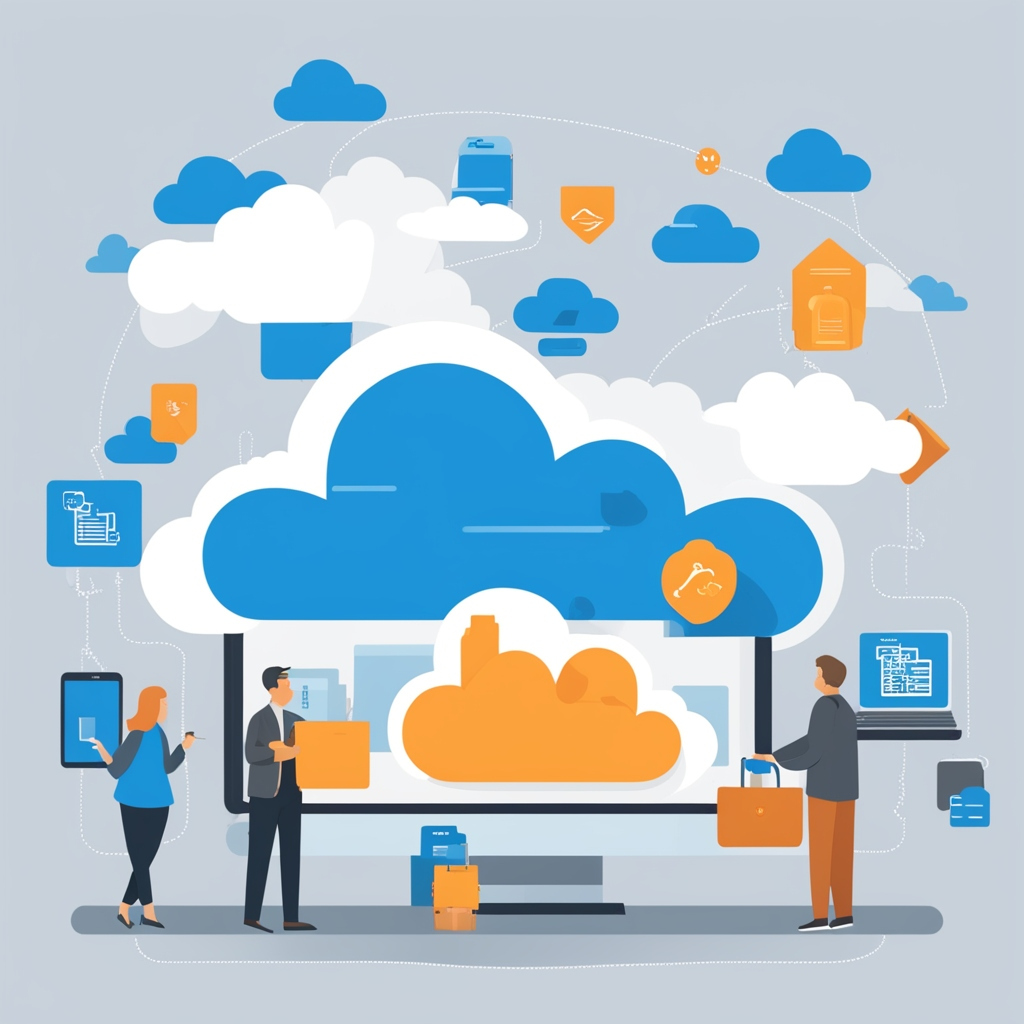In today’s fast-paced digital landscape, businesses are increasingly turning to cloud computing as a means to enhance flexibility, reduce costs, and streamline operations. Cloud migration—the process of moving data, applications, and other business elements to a cloud environment—is a strategic move that can provide significant advantages. However, it requires careful planning and execution to avoid pitfalls that could disrupt operations or lead to unexpected expenses. In this guide, we’ll walk you through a detailed, step-by-step approach to cloud migration, ensuring your business transitions smoothly to the cloud.
Step 1: Cloud Migration: Assessing Your Current IT Infrastructure
Before diving into cloud migration, it’s crucial to start with a comprehensive assessment of your existing IT infrastructure. This involves taking a detailed inventory of your applications, data, and workloads. By understanding what you currently have, you can determine which elements are suitable for migration, which may need refactoring, and what might be better left on-premises. Tools like AWS Application Discovery Service or Azure Migrate can help automate this assessment, providing insights into dependencies and performance metrics.
Step 2: Define Your Cloud Migration Strategy
With a clear picture of your current infrastructure, the next step is to define your cloud strategy. This involves setting clear goals for what you want to achieve with cloud migration. Are you looking to reduce costs, improve scalability, enhance security, or all of the above? Your strategy should also include choosing the type of cloud deployment that best suits your business needs—whether it’s public, private, or hybrid cloud.
Additionally, decide on the cloud services model that aligns with your goals. For instance, Infrastructure as a Service (IaaS) offers the most flexibility but requires more management, whereas Software as a Service (SaaS) is easier to deploy but may limit customization.
Step 3: Select the Right Cloud Provider
Choosing the right cloud provider is a critical decision that can impact the success of your migration. Major players like Amazon Web Services (AWS), Microsoft Azure, and Google Cloud Platform (GCP) each offer a range of services with varying levels of support, security, and cost. When selecting a provider, consider factors such as:
- Cost: Understand the pricing models and estimate the total cost of ownership.
- Security: Evaluate the provider’s security features, including compliance with industry standards.
- Support: Check the level of support offered, especially if you’re new to cloud environments.
- Scalability: Ensure the provider can handle your growth needs without compromising performance.
Comparing these aspects will help you make an informed decision that aligns with your business objectives.
Step 4: Plan Your Migration Approach
Once you’ve selected a cloud provider, the next step is to plan your migration approach. There are several migration strategies, commonly referred to as the “6 Rs”:
- Rehosting (Lift and Shift): Moving applications directly to the cloud with minimal changes.
- Replatforming: Making a few optimizations without changing the core architecture.
- Refactoring: Re-architecting applications to be more cloud-native.
- Repurchasing: Switching to a new product, typically a SaaS model.
- Retiring: Decommissioning outdated applications.
- Retaining: Keeping some applications on-premises if they aren’t ready for migration.
Choose the approach that aligns with your business needs, resources, and timeline. For many businesses, a combination of these strategies works best.
Step 5: Develop a Detailed Migration Plan
With your strategy in place, it’s time to develop a detailed migration plan. This should include:
- Timeline: Set realistic timelines for each phase of the migration.
- Resources: Identify the teams and tools needed to execute the migration.
- Risk Management: Plan for potential risks and how to mitigate them, such as data loss or downtime.
- Backup and Recovery: Ensure there’s a backup plan in place to restore data if anything goes wrong during migration.
A well-structured plan minimizes disruptions to your business operations and ensures a smoother transition.
Step 6: Execute the Migration
Now it’s time to put your plan into action. Start with migrating non-critical workloads to test the waters and minimize the impact of any unforeseen issues. Use automated tools provided by your cloud provider, such as AWS Migration Hub or Azure Site Recovery, to streamline the migration process. Throughout the execution phase, maintain clear communication with all stakeholders to ensure everyone is aligned and aware of the migration status.
Step 7: Testing and Validation After Cloud Migration
Once the migration is complete, it’s essential to thoroughly test and validate your new cloud environment. This involves:
- Testing Application Performance: Ensure that applications run as expected in the cloud without degradation in performance.
- Data Integrity Checks: Verify that all data was migrated correctly and is accessible.
- Security Validation: Confirm that all security settings are correctly configured to protect your data.
This step is crucial to identifying and addressing any issues before going live.
Step 8: Optimize and Secure Your Cloud Environment
After migration, optimization should be a continuous process. Look for ways to improve performance and reduce costs, such as rightsizing instances or using cloud-native services. Security should also be a top priority—ensure that best practices are followed, such as implementing multi-factor authentication, setting up robust identity and access management policies, and regularly updating your security configurations.
Step 9: Train Your Team and Manage Change
Moving to the cloud is not just a technical change but also a cultural one. Train your IT team and end-users to make the most of the new environment. Change management processes should be put in place to ensure smooth adoption and minimize resistance. Regular training sessions and clear communication about the benefits of the cloud can help in easing the transition.
Step 10: Monitoring and Maintaining Your Cloud Infrastructure
Finally, monitoring and maintenance are critical to the long-term success of your cloud environment. Use monitoring tools to track performance, costs, and security metrics. Regularly review and adjust your cloud strategy to ensure it continues to meet your business needs as they evolve.
Conclusion: Achieving a Successful Cloud Migration for Your Business
Cloud migration can be a transformative move for your business, offering numerous benefits from cost savings to enhanced agility. However, it’s essential to approach it methodically, with a clear strategy and detailed planning. By following the steps outlined in this guide, your business can navigate the complexities of cloud migration and reap the rewards of a successful transition.
If you need assistance with your cloud migration journey, our team at IT Help Support is here to help. We offer expert guidance and support to ensure your migration is smooth, secure, and aligned with your business goals.





